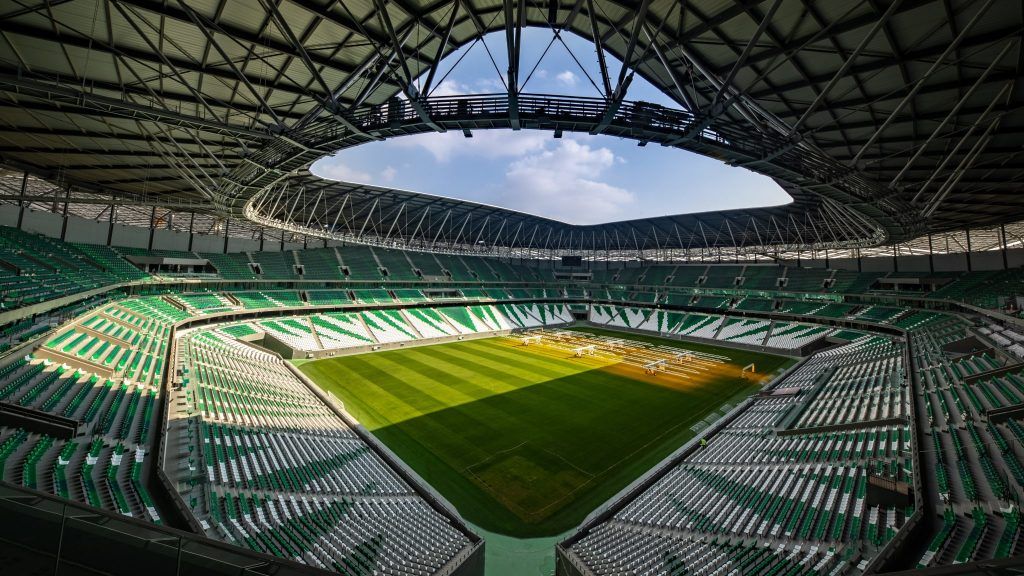Qatar informó sobre sus avances en preparativos en instalaciones deportivas e infraestructura para la Copa Mundial de la FIFA de 2022, como parte de un informe de la Organización Mundial de Comercio (OMC).
Sports facilities
The Supreme Committee for Organization and Legacy (SCDL) is responsible for the provision of sports facilities for the 2022 FIFA World Cup.
The strategic plans of the SCDL are supported and dovetailed with those of other government entities responsible for infrastructure development in Qatar.
As a result, the immediate unfavorable effects of regional challenges were quickly overcome, as the authorities encouraged domestic production of building materials, while continuing to actively seek alternative import markets.
The Government’s efforts to establish new maritime and air routes efficiently and rapidly have also contributed to limiting the long-term effects or delays in execution times.
In this regard, and despite the situation, Qatar remains committed to organizing a truly regional FIFA World Cup.
All eight venues for the FIFA World Cup will be ready by 2021 as projects continue to progress on schedule and on budget, with some of them already completed.
The first venue to be inaugurated was the Khalifa International Stadium, which opened its doors in May 2017, five and a half years before the start of the tournament.
The Al Janoub and Education City stadiums were completed in April and December 2019, respectively.
FIFA World Cup
By the end of 2020, Qatar has six venues ready for the tournament, with the Al Rayyan, Al Bayt and Al Thumama stadiums completed.
None of these stadiums will be more than 75 km away from the others.
In addition, the Ras Abu Aboud Stadium in Qatar, with a capacity of 40,000 seats, will be completely dismantled after the tournament, something that has never been done with a FIFA stadium.
This will be possible thanks to its unique construction model, for which transport containers and modular seats have been used.
These and other parts of the stadium will later be used in other sports or other facilities.
In addition, most of the venues have a modular design, which will allow the removal and donation of excess seats after 2022.
In fact, Qatar’s sports infrastructure is already being widely used by the country’s communities.

Each facility has been designed with a particular heritage in mind, suited to local communities, so that it can be used long after the tournament.
These plans were formulated after extensive consultation with local communities to ensure that the needs of those who will be using these infrastructures are met before and after the tournament.
Many venues will have sports and other facilities as a legacy; some will contain schools, mosques, wedding halls and retail space in and around the stadium after 2022.
Environment
Additionally, Qatar is working towards a Global Sustainability Assessment System (GSAS) certification for all stadiums to ensure that the most environmentally friendly materials and practices are used.
To that end, Qatar launched a joint sustainability strategy with FIFA and will be the first host country to hold a fully carbon neutral tournament.
As part of the initiative, the stadiums were designed with the goal of reducing both waste generated during the manufacturing of stadium components and at the construction site during construction.
Low consumption and renewable energy solutions were also incorporated where possible, making the stadiums self-sufficient and even generating energy for other facilities.
The enclosures have also undergone rigorous technical and operational readiness tests. On the one hand, several test tournaments, such as the 2019 Arabian Gulf Cup and the 2019 FIFA Club World Cup, have already been successfully organized while evaluations are underway.
This process consists, among other things, in certifying compliance, prior to delivery, with strict standards incorporated in the contracts, checking the preparation of the stadiums holding matches with different numbers of attendees, and verifying that adequate materials have been used to comply. sustainability criteria, that health and safety plans are in place and are tested, and that the structures meet civil defense standards.
Authorities expect that all work that has not yet been carried out or has not been completed will be carried out as tests are carried out.
Recruitment is ongoing, focusing primarily on the final stages of delivery.
Infrastructure
Qatar’s preparations for the FIFA World Cup continued to advance despite the events that marked the period under review.
To that end, Ashghal continued to develop Qatar’s basic infrastructure, namely highways, local roads, public buildings and flood prevention infrastructure, as well as the Intelligent Transportation System and the Public Environment Beautification Program.

The agency also built bus stations and depots and deterrent parking areas that will complement the Doha metro, and in 2019 completed the «cold pavement» pilot project, an initiative aimed at reducing solar radiation from asphalt through the use of cryogenic material.
Since 2014, Ashghal has completed 771 km of the new road network; 151 road junctions (newly built or rehabilitated); 200 bridges and underpasses; 853 km of pedestrian paths, bicycle lanes and mixed roads; a 3,400 km sewerage project; 6,700 km of new local roads; and 5,100 km of drainage projects.
FIFA World Cup
Ashghal has several signed commitments for 2020, totaling QAR 32.8 billion in road and infrastructure projects and QAR 4.8 billion in building projects.
Starting in 2014, the agency renewed its project management capacity and streamlined its recruitment process.
In addition, it adjusted its strategy to ensure that the circumstances experienced in mid-2017 do not recur.
To do this, it established a collaborative relationship with other agencies to encourage local companies to become suppliers of building materials, and contacted institutions and the private sector in previously unexploited import markets with a view to ensure a steady stream of imports of building materials.
The case of tar is an example of the search and discovery of new import markets.
![]()

